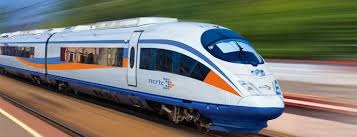NCRTC has floated the tender for civil construction of the Delhi-Gurugram-SNB (Shahjahanpur-Neemrana-Behror Urban Complex) RRTS corridor. NCRTC or National Capital Region Transport Corporation is the implementing body for the regional rapid transit system (RRTS) in the national capital region (NCR). NCRTC is inviting bids for the construction of the elevated viaduct, spanning from the end of the ramp at IDPL complex to the start of the ramp at Rajiv Chowk. This distance on the route, will cover three elevated RRTS stations, namely, Udyog Vihar, Sector-17 and Rajiv Chowk. The tender floated by NCRTC has excluded the architectural finishing as well as the pre-engineered steel roof structure of the RRTS stations.
According to information shared by NCRTC , the organisation has already floated a tender for the engagement of a detailed design consultant (DDC) for the architectural, civil and the E&M work for the design of three RRTS elevated stations in Gurugram-Udyog Vihar, Sector 17, Rajiv Chowk and also for the elevated viaduct between IDPL complex ramp to the Rajiv Chowk ramp for the Delhi-SNB RRTS corridor. The pre-construction activities such as soil testing, utility diversion, geotechnical investigation, pile load test have been in progress on this route of the corridor.
The 106-km long Delhi-Gurugram-SNB corridor is part of the 164-km long Delhi-Alwar RRTS project. Delhi-Alwar RRTS is one of the three corridors prioritized for implementation, along with Delhi-Meerut RRTS and Delhi-Sonipat-Panipat RRTS.
Delhi Gurugram SNB corridor: Route and stations
- The Delhi-Gurugram-SNB corridor will be constructed on the elevated stretch for about 71 km, covering 11 RRTS stations. The remaining 35 km distance, covering five stations, will be constructed underground, mostly in Delhi and Gurugram.
- Once operational, the Delhi Gurugram SNB corridor is expected to bring down the travel time between Delhi-SNB to about 70 minutes.
- This corridor will originate from Sarai Kale Khan in Delhi and connect the areas of Munirka, Aerocity and Gurugram.
- It will converge at Delhi’s Sarai Kale Khan station with the other two RRTS corridors, namely, Delhi-Meerut and Delhi-Panipat RRTS.
- These RRTS corridors will be interoperable and will be seamlessly integrated with the other modes of public transport such as Delhi Metro, inter state bus terminals (ISBT) and Indian Railways station. This line will also connect Delhi’s Indira Gandhi International (IGI) airport to the RRTS network
- This smart line will be passing through the industrialized and urbanized areas of Haryana and Delhi. This will increase the overall productivity of NCR through fast, reliable and safe mode of travel.
- The RRTS trains will have an operation speed of 160 kmph and an average speed of 100 kmph and will be available at a frequency of every 5-10 minutes on the network.



